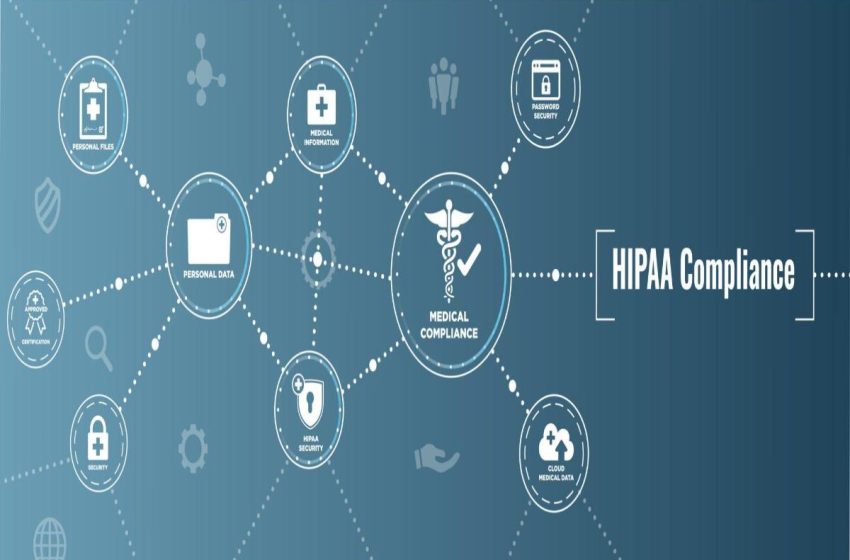
Navigating HIPAA Compliance: The Role of Managed IT in Protecting Patient Data
In the ever-evolving landscape of healthcare, HIPAA stands as a beacon of trust, safeguarding patient data with the vigilance it deserves. This legislation, pivotal in its role, sets the gold standard for privacy and security in healthcare, ensuring that sensitive patient information is handled with the utmost care and confidentiality. However, as we navigate through the digital age, the challenge of maintaining compliance has become a complex puzzle, demanding not just diligence but also technological savvy. Enter the world of Managed IT services – a dynamic ally in this mission. These services are not just about managing technology; they’re about fostering a secure environment where patient data is not just stored, but shielded with layers of protection.
Table of Contents
Understanding HIPAA Compliance in Healthcare
The Health Insurance Portability and Accountability Act (HIPAA), a cornerstone in the realm of healthcare, establishes rigorous standards for the protection and confidential handling of sensitive patient data. At its core, HIPAA mandates strict controls over the access, use, and sharing of personal health information (PHI), placing a significant responsibility on healthcare entities to ensure the privacy and security of this information.
The impact of HIPAA on healthcare companies and their IT infrastructure is profound. To comply with HIPAA, healthcare organizations must implement a range of safeguards, including secure data storage, robust access controls, and regular security audits. These measures are critical not only for legal compliance but also for maintaining the trust and confidence of patients in the security of their personal health data. However, companies can consult a professional in HIPAA medical record storage and provide an extra layer of protection to patients.
Despite efforts to enhance data protection, recent statistics indicate a complex landscape in healthcare data security. According to data from the Office for Civil Rights Breach Portal, there was an 8.5% reduction in healthcare data breaches from Q2 to Q3 in 2023, and a 5.2% reduction from Q3 in 2022. However, there was an alarming increase in the number of breached records. In Q3 2023, an astounding 45,799,584 healthcare records were compromised – a 53.47% increase over the previous quarter. This figure approaches the total number of healthcare records breached in the entirety of 2021, highlighting the persistent and evolving challenge of safeguarding patient data in the healthcare sector.
This landscape underscores the critical need for robust and proactive IT strategies in healthcare organizations to navigate HIPAA compliance effectively. The role of Managed IT services becomes increasingly vital in this context, offering specialized expertise and resources to bolster data security and compliance efforts.
Key Components of a HIPAA-Compliant IT Strategy
A robust IT strategy is vital for HIPAA compliance, involving several critical components designed to ensure the security and integrity of patient data.
Data Encryption and Secure Access Controls
Data Encryption: Encrypting patient data is fundamental, both at rest and in transit. This ensures that even if data is intercepted or accessed improperly, it remains unreadable and secure.
Secure Access Controls: Implementing stringent access controls ensures that only authorized personnel can access sensitive patient information. This includes using strong authentication methods and monitoring access logs.
Regular Risk Assessments and Audits
Risk Assessments: Regularly evaluating potential vulnerabilities in the IT infrastructure is crucial. This helps in identifying and mitigating risks before they can be exploited.
Audits: Conducting periodic audits ensures compliance with HIPAA regulations and helps in identifying any deviations or areas of improvement in the existing security measures.
Disaster Recovery and Data Backup Plans
Disaster Recovery Plans: Having a well-structured disaster recovery plan ensures that patient data can be quickly restored and accessed in the event of a cyber attack, natural disaster, or other data-loss scenarios.
Data Backup Plans: Regular backups of patient data are essential. This not only aids in quick recovery during data loss incidents but also ensures data integrity and availability at all times.
Each of these components plays a critical role in forming a comprehensive HIPAA-compliant IT strategy, safeguarding patient data against evolving cybersecurity threats and maintaining the trust vested in healthcare institutions.
Conclusion
In conclusion, the role of managed IT services in achieving HIPAA compliance cannot be overstated. These services provide a structured and efficient approach to handling the complex requirements of HIPAA, ensuring that patient data is protected through advanced security measures like data encryption, secure access controls, regular risk assessments, and robust disaster recovery plans. The investment in managed IT is not just a compliance measure but a strategic decision that offers long-term benefits. It enhances the overall security posture of healthcare organizations, fortifies trust in patient-provider relationships, and ensures the integrity and availability of critical health information in an increasingly digital healthcare landscape.

